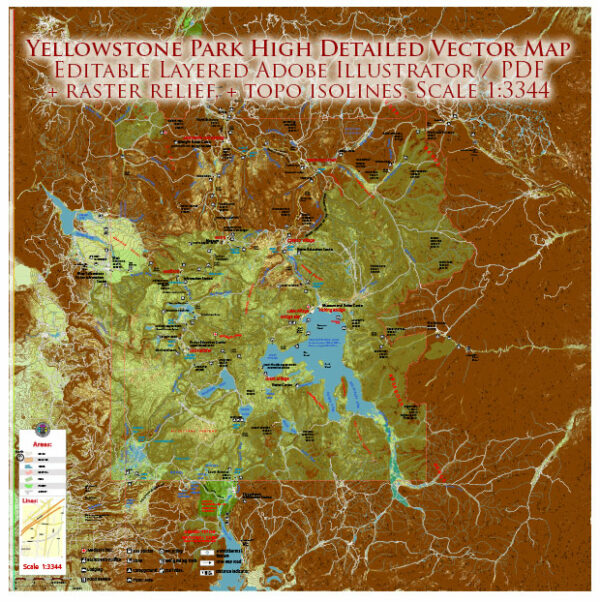Yellowstone National Park, located primarily in the U.S. state of Wyoming but also extending into Montana and Idaho, is renowned for its natural beauty and diverse ecosystems. The park, established in 1872, was the first national park in the world. Here are some key aspects of the natural resources found in Yellowstone:
- Geothermal Features:
- Geysers: Yellowstone is home to over half of the world’s geysers. Old Faithful is the most famous, erupting regularly with a predictable schedule.
- Hot Springs: The park has numerous hot springs, with Grand Prismatic Spring being one of the largest and most vibrant in color.
- Mud Pots and Fumaroles: These geothermal features are caused by the park’s location over the Yellowstone Caldera, a supervolcano.
- Wildlife:
- Bison: Yellowstone has one of the largest and oldest public bison herds in the United States.
- Elk: The park is also home to a significant population of elk.
- Grizzly Bears and Black Bears: Both species of bears inhabit the park.
- Wolves: Yellowstone is known for the successful reintroduction of gray wolves in the 1990s.
- Flora:
- The park features a variety of ecosystems, from high alpine meadows to dense forests.
- Coniferous forests dominate the landscape, including species like lodgepole pine, subalpine fir, and Engelmann spruce.
- Unique plant life can be found around the geothermal features, adapted to the extreme conditions of heat and mineral-rich waters.
- Water Resources:
- Yellowstone Lake: This is the largest high-elevation lake in North America and is known for its pristine waters.
- Rivers and Streams: Numerous rivers and streams, including the Yellowstone River, flow through the park, providing essential habitats for aquatic life.
- Landscape:
- The park is characterized by a diverse landscape, including canyons, waterfalls, mountains, and plateaus.
- The Grand Canyon of the Yellowstone, with its vibrant colored walls, is a notable geological feature.
- Recreational Resources:
- Visitors to Yellowstone can engage in a variety of recreational activities, such as hiking, camping, wildlife watching, and fishing.
- The park’s geothermal features also attract tourists who come to witness the unique and dynamic geological activity.
It’s important to note that while Yellowstone is rich in natural resources, it is also a protected area, and efforts are made to preserve its ecosystems and maintain the delicate balance of its environment.


 Author: Kirill Shrayber, Ph.D.
Author: Kirill Shrayber, Ph.D.